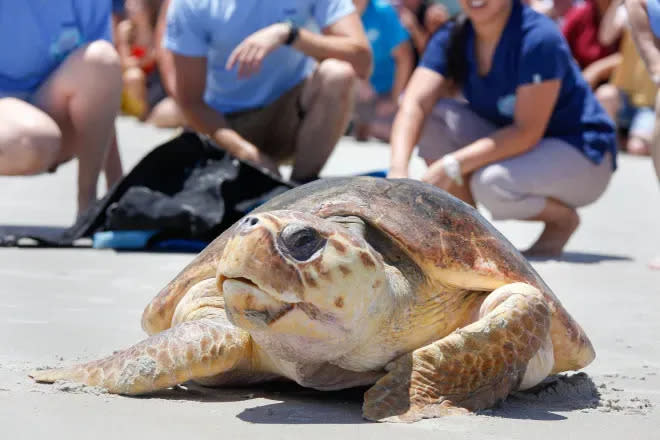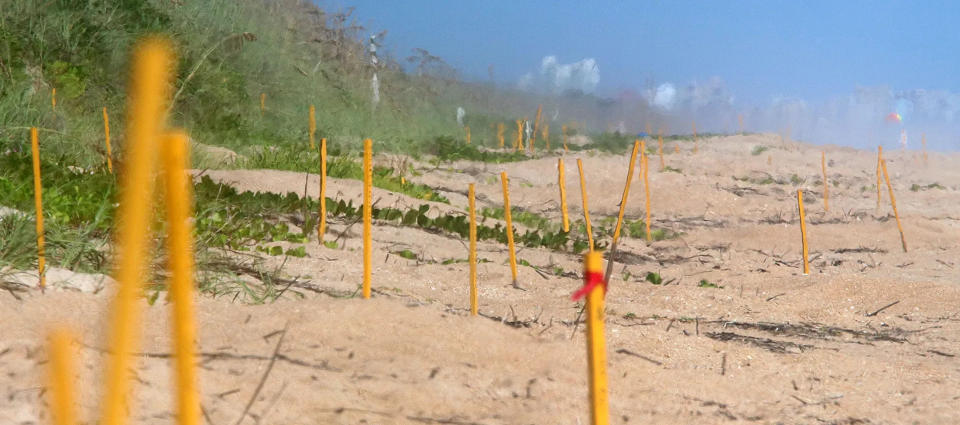Sea turtle nesting season starts May 1. What you need to know.
About this time every year, herpetologists and fans of sea turtles work to remind beachgoers of the human-related obstacles these sea creatures face.
The reason? Sea turtle nesting season is upon us.
Running generally from May through October, hundreds of sea turtles will leave the Atlantic Ocean surf to lay eggs in the sand of Volusia and Flagler counties.
Spring Break 2023: Is red tide on the east coast of Florida?
More:Turtle-nesting season threatens to stall hurricane reconstruction efforts in Volusia

Here's how beachgoers can lessen their impact as the season approaches.
Leave no trace
Knock down sandcastles and/or sculptures and fill in holes
Remove all beach accessories (chairs, umbrellas, tents, toys)
Clean up food and any additional trash
Why it matters: Disturbed sand and beach accessories create obstacles to both nesting mother turtles and hatchlings who may get stuck if they fall into a hole.
Leaving food and other garbage behind may draw raccoons and other egg-eating critters to the area. Raccoons, according to the nonprofit Sea Turtle Conservancy, "destroy thousands of sea turtle eggs each year and are one of the greatest causes of sea turtle mortality on Florida's beaches."

Keep it quiet and dark
Shield or turn off artificial lights visible from the beach
Retrofit lights with wildlife-friendly amber-, orange-, or red-colored bulbs
Don't light bonfires or fireworks
Why it matters: Bright lights and loud noises can bother nesting turtles. Hatchlings can also confuse artificial lighting for the horizon and crawl in the wrong direction.
Installing or retrofitting beachside lighting? Follow the Florida Fish and Wildlife Conservation Commission's recommendation of "low-shielded-long."
FWC:Lighting guidelines around sea turtles
Low: Mount lighting fixtures as low as possible; use low wattage/lumens
Shielded: Point fixtures downward; shield bulb from beach
Long: Use lights with long wavelengths (amber-, orange-, or red-colored bulbs)
This article originally appeared on The Daytona Beach News-Journal: How beachgoers can lessen their impact on sea turtle nesting season

